- Can Horses Eat Watermelons - September 23, 2023
- How to Get a Horse to Trust You - September 21, 2023
- Best Horse Wormers for Spring Guide - August 10, 2023
I’ve worked with horses for over 25 years and know that understanding horse health is vital to ownership. I’ve dealt with many injuries and illnesses over the years. I know that horses are pretty tough, but when things go wrong, problems can rapidly escalate.
Knowing how to spot the subtle signs of illness is crucial. When you catch sickness early, horses have a better chance of recovery, and potentially you will save money on vet bills. In this article, I’ll explain exactly how to tell if a horse is unwell and when to call the vet.
Bottom Line Up Front
In this guide, we’ll explore several aspects of horse health, including:
- Signs of a healthy horse
- How to recognize the early signs of illness
- When to call the vet
- Common health problems
- How to promote horse health
Horse Health – An Overview
When it comes to monitoring horse health, there are several factors to consider. If a horse is unwell, one of the first things I do is check its vital signs, such as the breathing and pulse rate, temperature, hydration status, and membrane color.
As a horse owner, you must know how to check their vital signs, and I’ll tell you how below:
The Breathing Rate
The average breathing rate for a resting horse is 8 – 16 breaths per minute. I check the breathing rate by watching the horse’s nostrils or flanks. The flanks and nostrils expand and contract with each breath.
The Pulse Rate
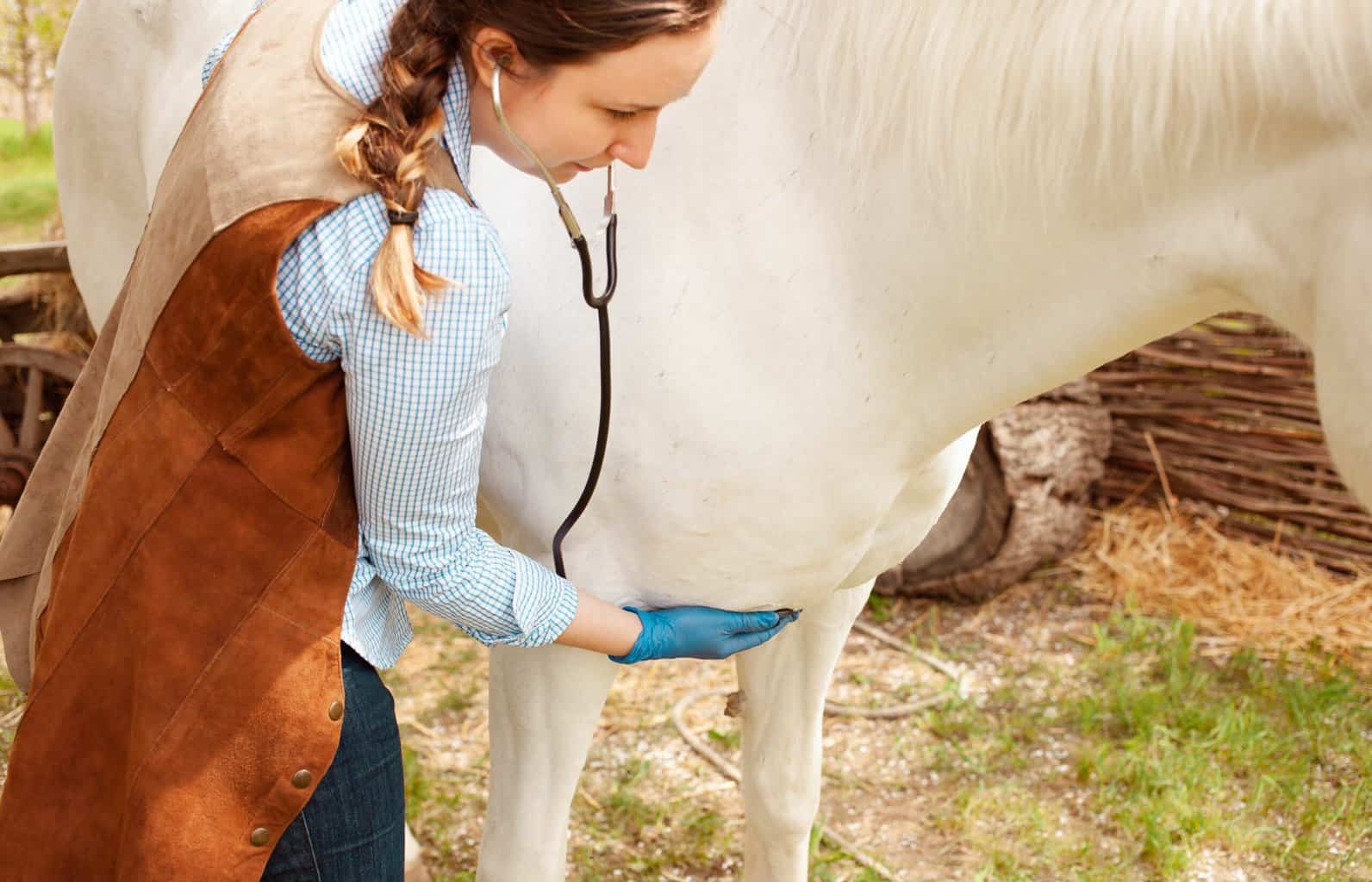
A healthy pulse rate for a relaxed horse is 28 – 40 beats per minute. You can check the pulse with a stethoscope on the chest behind the left elbow or by feeling a main artery. I usually take it from the digital artery, located below the fetlock and towards the inner leg. I gently press my fingers on it and hold them there for 30 seconds while counting the beats.
Capillary Refill/Membranes
I always check a horse’s membranes if they are unwell. The membranes are the moist pink tissue around the eyes and the gums. Healthy membranes are bright pink, while pale membranes are a cause for concern.
In addition to checking the membranes, I also do a capillary refill test. For a capillary refill test, I press my thumb into the gums for 5 – 10 seconds. The area will be pale when I remove my thumb, but the pink color should return after 3 – 5 seconds.
Temperature
A healthy horse’s temperature is 99 -101.4°F (37.2 – 38.5℃). I use a thermometer, smeared with Vaseline, inserted into the rectum to take the temperature and leave it in for 1-3 minutes.
Hydration Status
You can tell if a horse is dehydrated by pinching a patch of the skin on the neck and releasing it. The skin should immediately pop back down into place. If it stays in a pinched position, the horse is dehydrated.
Signs of a Healthy Horse
The best way to monitor a horse’s health is to build a good relationship with them and establish their normal behavior. When I know a horse well, I can immediately tell if something isn’t right. A healthy horse is bright, alert, and responsive with a good appetite and is sound on all feet.
I check horses at least once a day, and here are the signs I look out for in a healthy horse:
- Alert – Healthy horses are alert and responsive to their environment.
- Clear, bright eyes – The eyes should be open wide, with no swelling, discharge or cloudiness.
- No nasal discharge – The nostrils should be dry, clear and mucous-free.
- Regular droppings – Horses should pass 8-12 droppings per day. Droppings should be firm and moist.
- Good appetite – Healthy horses love food and are always keen to eat.
- Sound on all legs – No stiffness or lameness.
- Shiny coat – Healthy horses have shiny coats.
- Breathing regularly – Breathing should be regular and rhythmic.
How to Tell When a Horse is Unwell
I’ve worked with horses for many years and intuitively know the signs of illness. I can usually tell if a horse is unwell just by looking at them. A sick horse will be quiet and lethargic and may show abnormal behavior, such as repeatedly rolling or pawing at the ground. Horses usually love food, and if they lose their appetite, this is a sure sign of illness.
To get a better idea about the signs of illness in horses, look at the list below :
- Quiet and lethargic – A sick horse will look sad and depressed.
- Sweating – For no apparent reason
- Excessive rolling – Excessive rolling is a sure sign of abdominal discomfort.
- Biting or staring at a body part – Horses often bite and stare at painful areas.
- Not eating or drinking – Loss of appetite is a huge red flag because horses usually love food!
- Irregular breathing – Coughing, blowing, and rapid or heavy breathing are a cause for concern.
- Lameness or stiffness – Or if they are unsteady on their legs.
- Eye or nasal discharge – Discharge may be thick mucous, or clear and runny.
- Wounds, injuries or swelling
- Laying down in strange places – Or doing other abnormal things.
- Collapsed – It’s a medical emergency when a horse can’t get up.
- Dull coat – A sick horse will often look shoddy.
- Not passing droppings or urinating regularly – This could indicate a blockage in the digestive or urinary tract and is an emergency.
When to Call the Vet
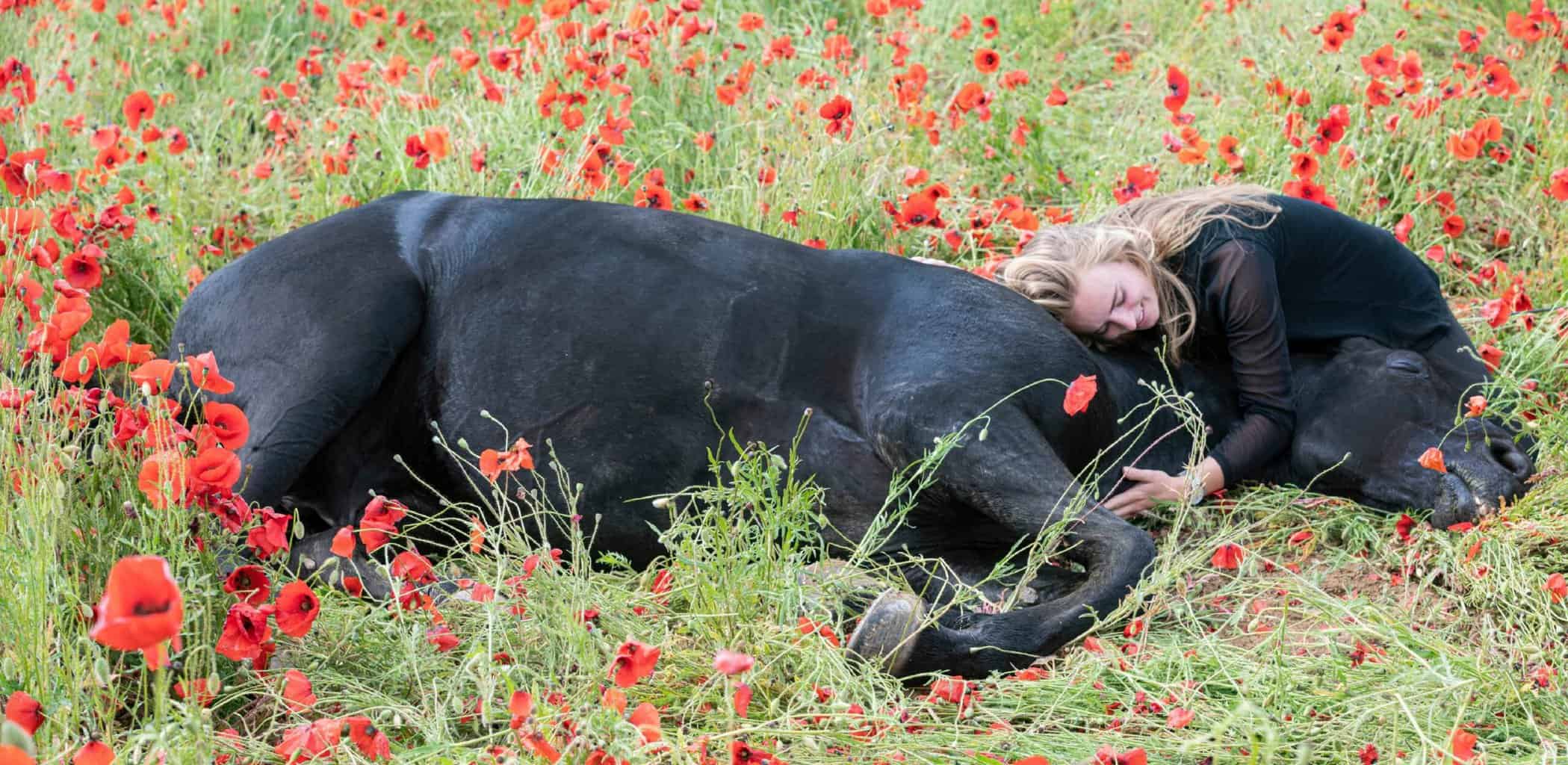
It’s stressful to see a sick horse. Even as an experienced owner, it’s not always easy to know when to call the vet, but there are some instances when I call the vet immediately.
Horses can deteriorate quickly, and I never waste time calling the vet in the following situations:
- If they are collapsed and can’t get up – It’s a bad sign if a horse is collapsed and needs immediate veterinary attention.
- Breathing difficulties – If a horse can’t breathe properly or is struggling for breath, they need a vet.
- Eye injuries – Eyes are delicate. I’ve seen many horses with them removed due to eye injury complications. I always call the vet out in an emergency for eye injuries because they can rapidly deteriorate.
- If the horse can’t put weight on a limb – If a horse can’t bear weight, this is a sign of a severe injury such as a broken leg.
- Large cuts or wounds – If a horse has large lacerations or deep puncture wounds, they need a vet to dress it and give them pain relief and antibiotics.
- Uncontrollable bleeding – If a horse is wounded and I can’t stem the bleeding – I call the vet immediately.
- Dull membranes – The membranes are the moist areas around the eye and the gums. Healthy membranes should be bright pink. I call the vet if a horse looks ill and has pale membranes.
- Not eating or drinking – I always call the vet if a horse isn’t eating or drinking. Horses can become dehydrated quickly.
- Not urinating – It’s rare for horses to have a urinary blockage, but the results can be fatal.
- Not passing droppings – Indicates a blockage in the digestive system.
- High or low temperature – If a horse’s temperature is above or below the normal range, I call the vet to investigate it.
Common Horse Health Problems
Many things can go wrong in horses – luckily, most illnesses and diseases are rare. But, there are several common health issues which most owners encounter at some point.
As a professional horsewoman, here are the health problems I deal with the most:
Health Problem #1 – Colic
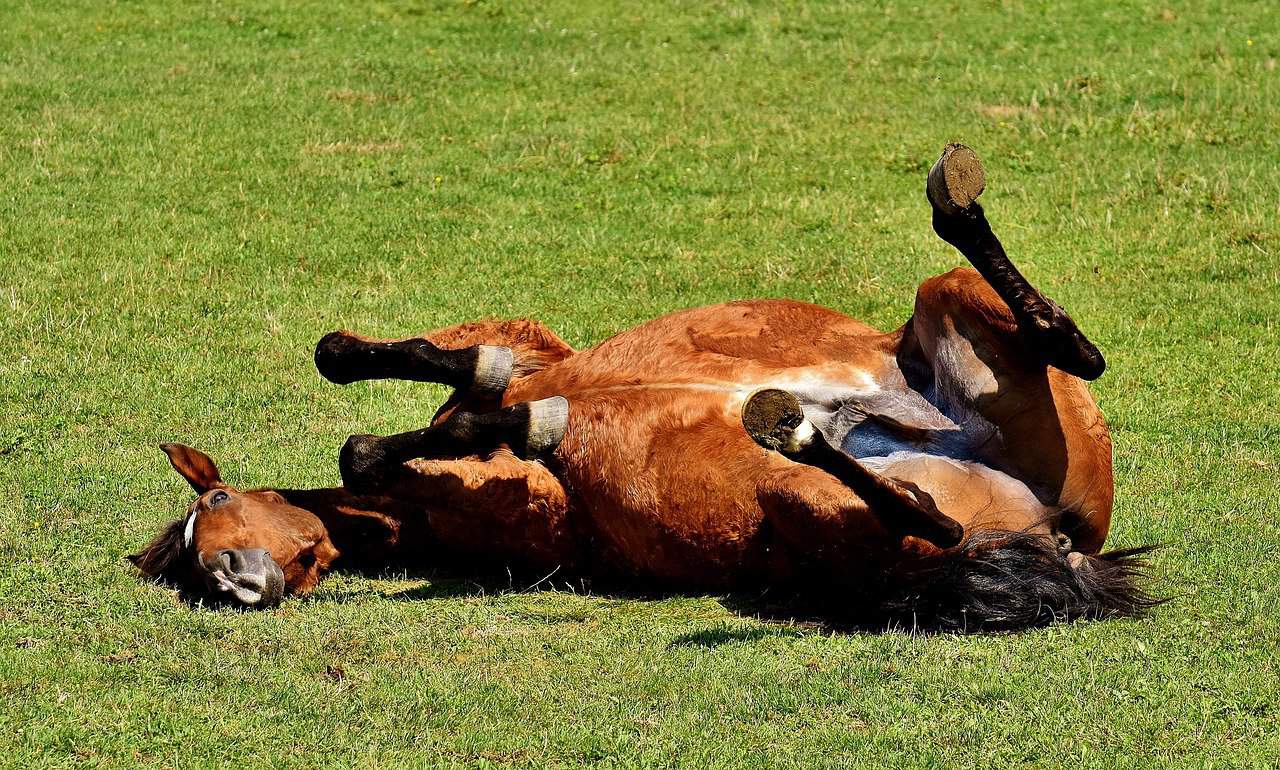
Colic is one of the main health issues I experience. Horses have a delicate digestive system and can’t vomit, so if they get a tummy ache, it becomes painful colic. Colic usually occurs when horses eat something they shouldn’t, such as poisonous plants or large amounts of concentrated food. It can also happen due to stress, wind sucking or a blockage in the colon.
Colic usually doesn’t kill horses – the danger is that they excessively roll around in pain and can twist their gut. Horses need major surgery for a twisted gut, and it’s often fatal.
Here are the most common signs of colic:
- Excessive rolling
- Pawing the ground
- Sweating
- Abdominal discomfort – Staring or kicking at their stomach.
- Not passing droppings
- Loss of appetite
If I suspect mild colic, I put a halter and lead rope on the horse and walk it around. This prevents the horse from rolling, and walking stimulates the digestive system. If the horse has severe symptoms such as a reluctance to walk, extreme pain, or collapses, I call the vet immediately.
In mild cases, usually after around half an hour of walking, the colic will pass. But, if it does not improve within an hour or two, or the horse deteriorates, I’ll call the vet to investigate further.
Health Problem #2 – Lameness
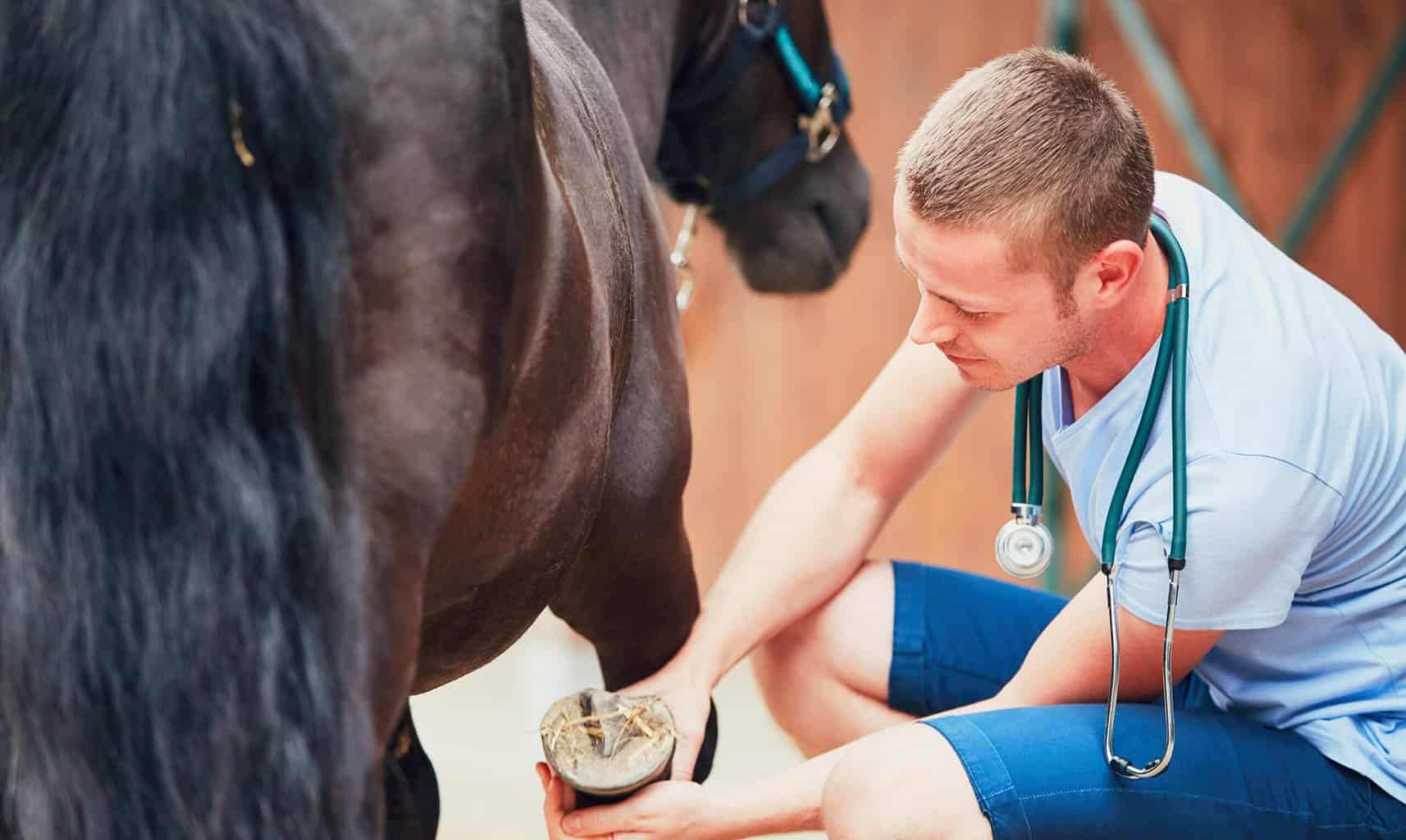
Lameness is common in horses. It can occur in the foot, legs, shoulder, hips or back and can be mild or severe. In severe cases, i.e. if the horse can’t bear weight or is in extreme pain, I always call the vet immediately.
The most common causes of lameness include:
- Pulled tendons or ligaments – These occur due to sprains, or if a horse carries too much weight or works beyond their capacity.
- Trauma – Injuries to the hoof or leg, such as lacerations, puncture wounds or fractures, can cause lameness
- Abscess – Hoof abscesses can be incredibly painful and cause sudden lameness.
- Navicular – This is a chronic condition affecting the navicular bone in the hoof.
- Laminitis – This is a painful, inflammatory foot condition often caused by a rich diet.
I initially provide treatment for pulled tendons and hoof abscesses myself. I apply cold packs three times daily for inflamed tendons and use a poultice dressing for a hoof abscess. If a horse has severe trauma or I suspect laminitis, I immediately call the vet for assistance.
Lameness in horses is complicated and not always easy to diagnose. Hoof abscesses, pulled tendons, and wounds are easy to identify, but conditions such as navicular and laminitis are more complex.
If you aren’t experienced with lameness and can’t confidently identify issues, call your vet for advice.
Health Problem #3 – Choke
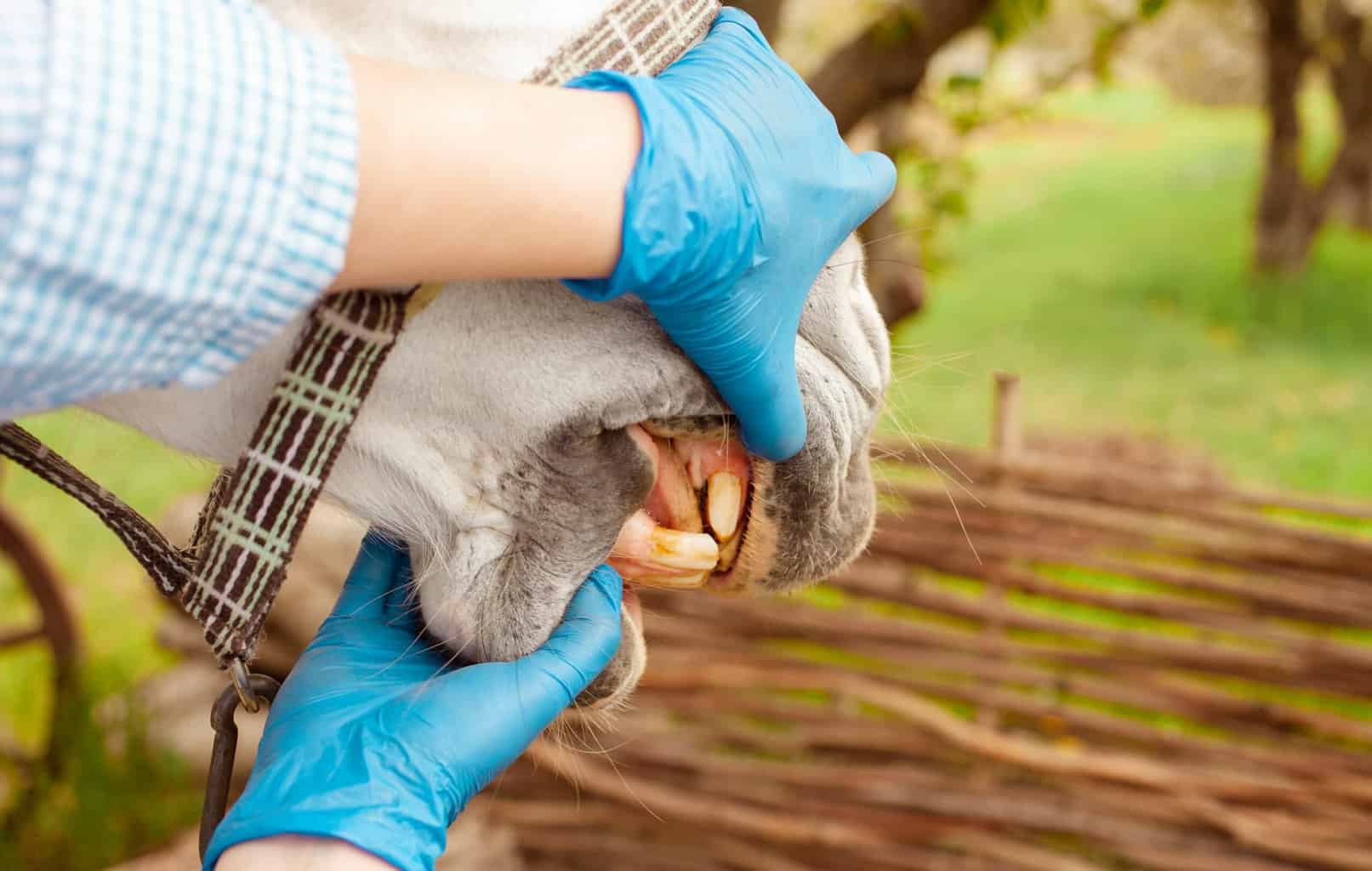
Choke is a common issue. It usually happens when horses rush their food and don’t chew properly. The food gets lodged in their esophagus (food pipe), and because the muscles only move towards the stomach, they can’t vomit the item back up.
Choke looks distressing but isn’t immediately life-threatening because the horse can breathe. But it is still an emergency, and I always call the vet with choke cases. I don’t let the horse eat and drink and keep them calm until the vet arrives.
Choke symptoms include:
- Coughing
- Hyper-salivation
- Thick nasal discharge
- Irregular breathing
- Extending their head and neck
- They can’t eat or drink
Health Problem #4 – Cuts and Wounds
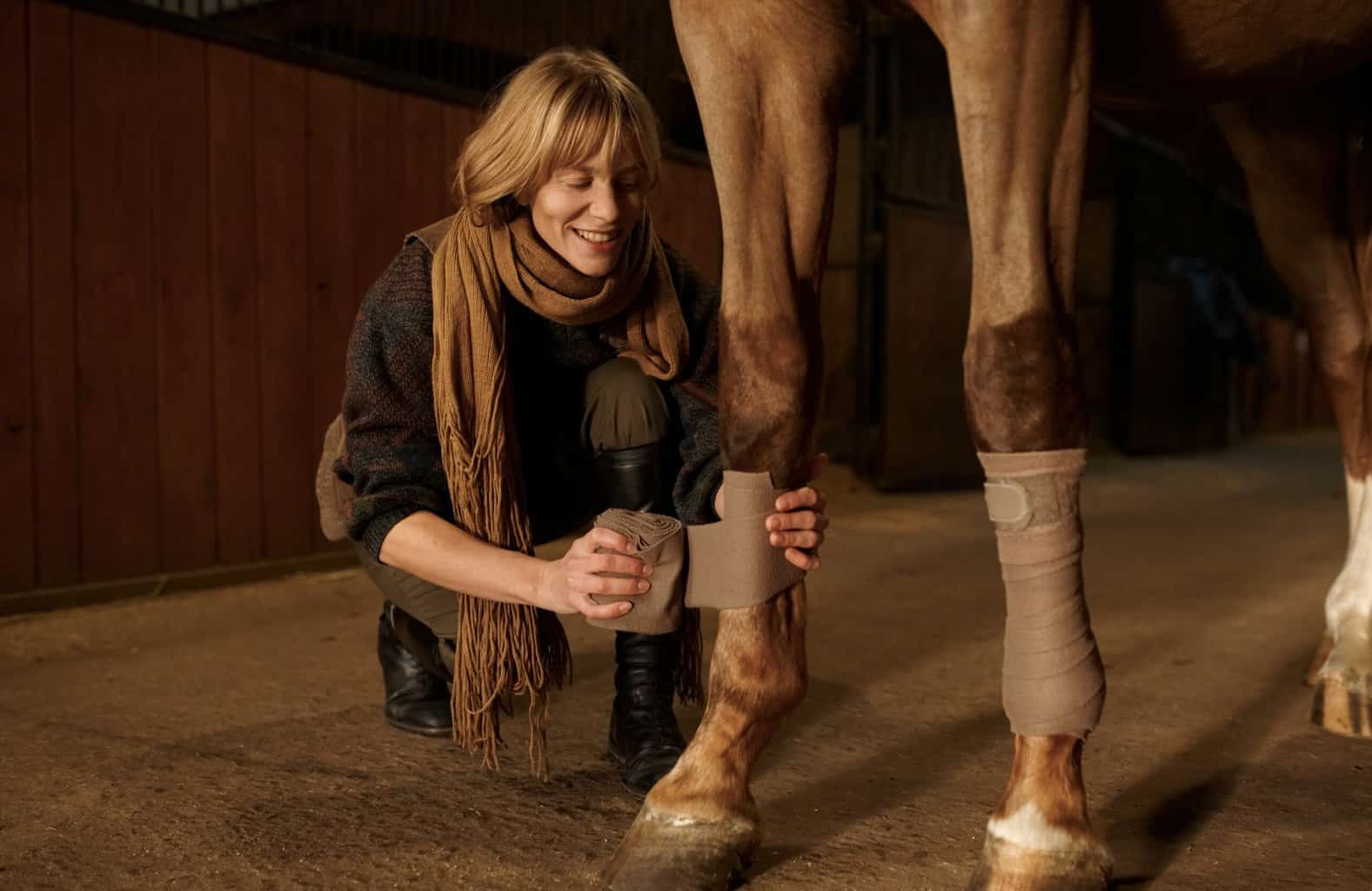
Horses are curious creatures and often get tangled in a fence or wedged into tight corners. The result is that they are prone to cuts and wounds.
I treat small, superficial wounds without medical supervision but always call the vet for large, deep ones, puncture wounds or excessive bleeding. The horse might need stitches, antibiotics and pain relief for large wounds.
A superficial wound is a small scratch or scrape which only affects the outer skin layers. To treat one, first, I clean it with warm water, iodine solution and sterile cotton pads. Next, I cover it in wound powder or spray and monitor it.
Superficial wounds usually aren’t a cause for concern and heal within days. But if it becomes swollen, weepy, or smelly, I call the vet to book an examination.
Top Tips on How to Keep Horses Healthy
If there’s one thing I’ve learned in my career, it’s that when it comes to horse health, prevention is better than cure. As a horse caretaker, I do many things to encourage optimum health. I ensure horses live in a clean, safe environment, feed them a balanced, high-quality diet and groom them daily.
Heath Tip #1 – Provide A Clean Safe Environment
As part of a good barn routine, I clean and maintain the paddock and stables regularly. I remove droppings and wet patches from the stable daily and ensure horses have a clean soft surface to stand and lay on. Horses that spend long periods in dirty stables are more prone to illness.
I walk the paddock several times a week to ensure the fence is safe and secure and that there are no rabbit holes or poisonous plants. I also remove the droppings from paddocks regularly to prevent parasites and promote pasture health.
Some paddocks are muddy in the winter, and to prevent hoof problems such as thrush, I ensure horses have a dry, firm, flat area to stand on.
Health Tip #2 – Feed The Correct Diet
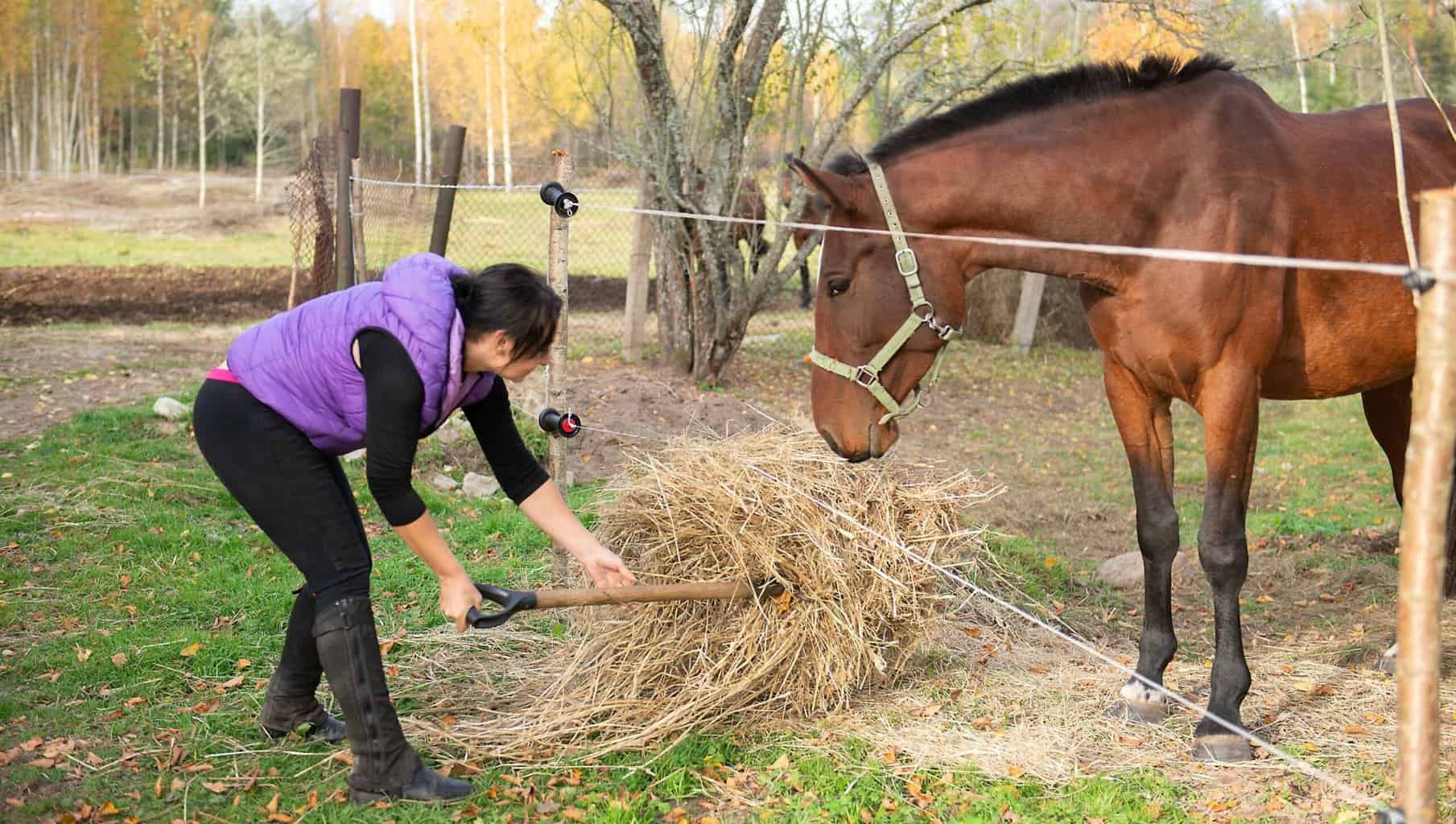
Horses are herbivores and have a delicate digestive system. They must eat little and often, and most of their diet should be roughage, ideally grass. Concentrated food and treats must only account for a small part. If horses don’t have access to good pasture, I supplement their diet with hay or haylage and I always ensure that they can access clean water.
I always feed a horse individually, according to their needs. A large active horse needs considerably more food than an inactive pony. Seniors often need more food because they don’t absorb many nutrients, and “easy keeper” ponies rarely need concentrated rations.
Overfed horses and ponies are more susceptible to metabolic conditions, such as laminitis and insulin resistance. Incorrect feeding is also the main cause of colic.
Heath Tip #3 – Groom Daily
Grooming is one of my favorite barn chores, and I groom horses daily. Brushing allows me to get to know the horse and to check the body for cuts, wounds, heat and swelling. I also pick the feet out daily to promote hoof health.
Grooming horses has many health benefits and is the equivalent of us having a massage. It promotes circulation, skin and coat health, and most horses find it relaxing.
Health Tip #4 – Give Horses Regular Exercise
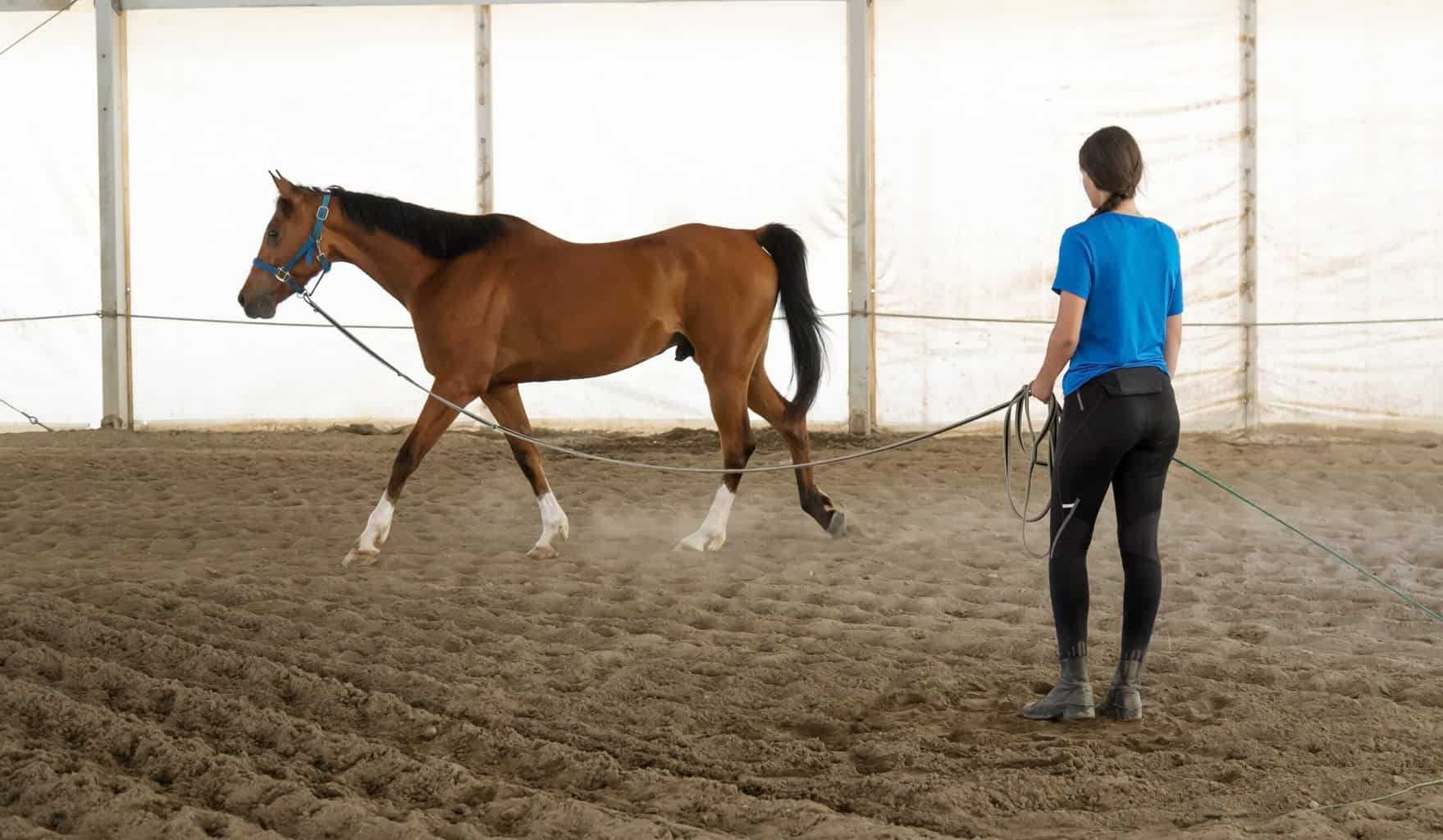
In their natural environment, horses roam for miles daily, and regular exercise is vital for their physical and mental well-being. Exercise helps the respiratory, circulatory and digestive systems and prevents horses from gaining weight. If horses stand still for long periods, they are more susceptible to illnesses.
If I have limited turnout for a horse, I create a regular exercise routine for them. Exercise options include riding, lunging, free schooling, or walking on a halter and lead rope.
Exercise also prevents boredom, which can lead to bad habits such as crib biting, wind sucking or weaving. If horses develop bad habits, they are more at risk of colic and leg strain. If a horse is confined for long periods, I enrich its environment with boredom breakers.
FAQs
Answer: Colic is one of the most common medical emergencies in horses. Horses have a delicate digestive system and can’t vomit, meaning a simple stomach ache can be a huge problem. Colic can be mild or severe – severe cases often need veterinary assistance. The main risk with the illness is if horses excessively roll around in pain, they can twist their gut, which can be fatal.
Answer: The first sign that a horse isn’t well is if they are quiet and lethargic, or acting differently. A sick horse usually won’t have an appetite, may sweat for no apparent reason or show signs of pains like stamping, rolling, staring or biting at a body part.
Answer: If a horse has lost their appetite and is showing other symptoms of illness, such as sweating, pale membranes or abdominal pain, I call the vet immediately. Horses usually have a fierce appetite, and not eating is often a sign of a more serious health problem.
Summary
Horses are expressive creatures – and most owners can tell when something isn’t right. A healthy horse is alert and responsive with a good appetite and clear, bright eyes. While a sick horse is usually quiet and lethargic, may show signs of pain and won’t be interested in food.
If a horse won’t get up, is in severe pain, can’t walk, or is off their food and water, I always call the vet immediately.
If you have any doubts about your horse’s health, always seek veterinary advice. A phone call costs nothing and may save your horse’s life.
Resources
- Adams, S. B. (2023, July 11). The lameness examination in Horses. MSD Veterinary Manual. https://www.msdvetmanual.com/musculoskeletal-system/lameness-in-horses/the-lameness-examination-in-horses
- Cleveland Equine Clinic. (2021, April 21). When To Call The Vet Common Horse Emergencies – Cleveland Equine Clinic The Leader in Equine Healthcare. https://clevelandequine.com/when-to-call-the-vet-common-horse-emergencies/
- Equine Wellness Magazine. (2019). Top 12 equine emergencies. Equine Wellness Magazine. https://equinewellnessmagazine.com/equine-emergencies/
- Four ways to take your horse’s pulse | Equimed – Horse health matters. (n.d.). EquiMed. https://equimed.com/health-centers/first-aid/articles/four-ways-to-take-your-horses-pulse#google_vignette
- Heyboerg. (2017, September 25). Lameness in the Horse: An owner’s Overview. myhorseuniversity. https://www.myhorseuniversity.com/single-post/2017/09/25/lameness-in-the-horse-an-owners-overview#:~:text=Common%20Causes%20The%20incidences%20of,%2C%20overload%20injuries%2C%20or%20arthritis.&text=Stone%20bruises%3A%20Stone%20bruises%20occur,the%20sole%20of%20the%20foot.
- Naf. (n.d.). NAF UK. NAF UK. https://www.naf-equine.eu/uk/naffacts/articles/21/horse-droppings.jsp#:~:text=Mares%20and%20geldings%20typically%20pass,than%20a%20horse%20on%20grass.
- Penn Vet | Common Emergencies – CoLIC. (n.d.). https://www.vet.upenn.edu/veterinary-hospitals/NBC-hospital/services/emergency-critical-care/common-emergencies/common-emergencies—colic#:~:text=A%20normal%20resting%20rate%20should%20be%20around%2040%20beats%20per%20minute.&text=If%20your%20horse%20is%20mildly,or%20two%2C%20call%20your%20veterinarian.
- Scott Dunn’s Equine Clinic. (2017, July 17). Tendons and ligament injuries – Scott Dunn’s Equine Clinic. Scott Dunn’s Equine Clinic. https://scott-dunns.co.uk/equine-advice/ailments-and-diseases/tendons-ligament-injuries/#:~:text=Treatment%20of%20ligament%20injuries&text=Box%20rest.-,Ice%20application%20or%20cold%20hosing%20two%20to%20three%20times%20daily,swelling%20and%20provide%20pain%20relief.
- Thal. (2016). 10 common horse emergencies & the skills you need to help. horsesidevetguide.com. https://horsesidevetguide.com/Common+Horse+Emergencies+and+the+Skills+You+Need+to+Help
- Thal. (2019). Database Record Viewer. Horse Side Vet Guide. https://horsesidevetguide.com/drv/Observation/343/not-eating-loss-of-appetite-not-hungry/
- Understanding choke in horses | AAEP. (n.d.). https://aaep.org/horsehealth/understanding-choke-horses
- When should I call the vet? | AAEP. (n.d.). https://aaep.org/horsehealth/when-should-i-call-vet#:~:text=The%20presence%20of%20uncontrollable%20bleeding,more%20than%2020%20minutes%20without

